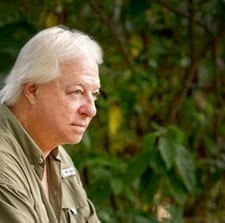Long Gone Sawdust Piles
June 11, 2017By Tom Poland
I drive through the country a lot and I never see sawdust piles anymore, yet another bit of the past that’s slipped away. Sawdust piles hold a bit of magic and nostalgia for me. I grew up near one. Each morning I woke to the sound of Mr. Henry Partridge’s sawmill planing lumber. Sounded like a big cicada, a rising and falling whining I’ve not heard since.
Saturdays, I’d walk through the woods to the old sawmill to see all that sawdust. There it stood, a bright, pine-scented pile, shaped by the angle of repose, fancy talk for how a pile slopes. For the curious, here’s a definition: “The angle of repose, or critical angle of repose, of granular material is the steepest angle of descent or dip relative to the horizontal plane to which a material can be piled without slumping. At this angle, the material on the slope face is on the verge of sliding. The angle of repose can range from 0 to 90 degrees.”
I long wanted to climb that beautiful pile of sawdust with its fancy angle of repose but was scared to. With reason as you’ll see, although it didn’t discourage others as you’ll see also.
As I remembered Mr. Henry’s sawmill, I wanted to see one, maybe even climb it. At the very least, I decided, I’ll find one to photograph. No luck. I couldn’t even find a good photo of a vintage sawdust pile on the Internet. Where did the sawdust piles go? Hauled off I guess, because every so often I drive up behind a big truck carting sawdust down the road. The sawdust piles we used to see end up shipped to places that use sawdust for things like particleboard, known also as an engineered wood product.
Where, I wondered, can I find a sawdust pile? I put out a request. “Does anyone know where an old sawdust pile is?” Only one person could locate one but it was a piece aways as the old folks used to say. Plenty of memories surfaced, however.
My high school friend, Ronnie Myers, wrote me. “Daddy knew where several were in the vicinity of his house and he would go get old sawdust for mulching his grape vineyard 30 or 40 years ago, and even then they had deteriorated to a point that they were almost flat. The ones I knew of would surely be unrecognizable by now.”
McCormick’s Linda McComb Floyd wrote me, too. “We had one on our farm Dad used and gave away for mulch. Lost many a flip-flop sliding down the sawdust pile.”
Ronnie passed along some good advice. “Talk to Gary Ward. In the 50s and 60s his daddy, Pelham, had ‘portable’ sawmills where you took the sawmill onto someone’s property and cut their timber onsite. On big tracts of timber they would be sawing lumber for several weeks or months at a time and that’s where you would have large piles of sawdust. Foxes and other woodland critters loved old sawdust piles because they could dig burrows and tunnels in them for dens. Potatoes grew well in them also.”
My friend, Debby Johnston Summey of Georgetown, wrote me. “In the rural area where my family lived, there were several giant sawdust piles. As children, we were warned not to climb the piles as they could collapse and suffocate us.”
My high school colleague and pal, Skip Hardin, added an ominous note to the warning not to play on a sawdust pile. “There use to be one behind Lauren B. Mims’ house that we spent many hours playing on. As I remember, the real terror story was that deep in the bowels of the sawdust pile it could catch fire from spontaneous combustion and a hapless lad could be playing on it when it would collapse and he’d be sucked into an inferno. That prospect always got my attention but not so much that it prevented us from playing on it anyway.”
Plummeting into an inferno … That sounds a bit like dropping into Hades, does it not.
I was happy to see Gary Ward join our discussion because he possesses more than a bit of knowledge about all matters sawmill and sawdust. Said Gary, “Portable sawmills were all over this area in the late 40s, not so many in the 50s as most of the timber was cut out of this area. Clark Hill Lake took up a huge portion of the timber-producing area. There was a resurgence of mills in the early 60s as more timber matured. By the early 70s, almost all of these mills were gone. The sawdust piles from this era have pretty much deteriorated until there is almost nothing left. Skip is right that they could get hot enough to burn due to the composting. But if they did catch fire, they mostly would just simmer along because the fire would not get enough oxygen to burn. It was a lot of fun playing on sawdust piles!”
Gary added that “The old ‘pecker wood’ mills were not very efficient. Typically, the lumber was cut and stacked for air-drying right in the woods at the mill site. When dry, it would be hauled to planer mills such as Cullers Lumber Company, Dorn Lumber Company in McCormick, or Cox Lumber Company in Troy, South Carolina. They could not operate in one place for more than a few weeks before the sawdust and other waste started getting in the way. Then they would have to move the mill, even if only a short distance away. But the entire operation could be moved in one day. It became more efficient to haul the logs to large stationery mills such as Pollard Lumber Company or the mill my father and I ran in McCormick. And that’s more than you wanted to know about saw milling!”
Big piles of sawdust, yet another thing today’s kids miss out on. I remember walking into the edge of Mr. Henry’s sawdust pile just a bit. Sort of like the ocean, I didn’t want to go in too deep for fear of the unknown. As a kid I wanted to climb to its very top but I didn’t. Like Debbie, I had been warned you could fall into its collapsing midst and suffocate. No guts, no glory as they say. I should have climbed it.
Sawdust piles. At least I have memories. The next time I’m home, I’ll go look at where Mr. Henry’s old sawmill pile long stood. Maybe something will remain of it, a piece of old machinery. Maybe. As for the sawdust itself, I’m sure time, rain, and even termites took care of it long ago. I can still hear that old mill working, though. A rising and falling sound like a giant cicada.
Visit Tom Poland’s website at www.tompoland.net
Email Tom about most anything. [email protected]
Tom Poland is the author of twelve books and more than 1,000 magazine features. A Southern writer, his work has appeared in magazines throughout the South. The University of South Carolina Press released his book, Georgialina, A Southland As We Knew It, in November 2015 and his and Robert Clark’s Reflections Of South Carolina, Vol. II in 2014. The History Press of Charleston published Classic Carolina Road Trips From Columbia in 2014. He writes a weekly column for newspapers in Georgia and South Carolina about the South, its people, traditions, lifestyle, and changing culture and speaks often to groups across South Carolina and Georgia, “Georgialina.”



















